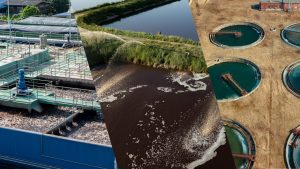Infrastructure projects are commonly known as complicated by their nature and this complexity makes it difficult for the engineers and stakeholders to strike the right balance between essential elements of the project and the final goal for the best outcome.
It is a heavy cloth of interwoven strings and one wrong step would make the entire project destroyed instantly.
This is where you need to trust new-age technology such as Building Information Modelling or BIM when it comes to full-scale infrastructure projects.
In this article, we will explore the employment of BIM in infrastructure projects and its benefits.
What Is BIM In Construction?

- BIM is software that is used by individuals, businesses, and government agencies who plan, design, construct, operate, and maintain buildings and these are electronic archives that can be shared, extracted, or networked to help with decision-making about a physical asset.
- ‘Building information modelling’ is a process that combines a variety of tools, technologies, and protocols to assist the creation and administration of digital representations of the functional and physical aspects of location.
- It can be known as a strategic approach for generating and maintaining data on a building project throughout every phase of its whole life cycle and it also makes it easier for clients, contractors, engineers, and architects to collaborate.
- As it is visible, the purpose of this is to offer a centralised digital platform where all project-related data such as specifications, plans, and timelines, is stored and available to all parties involved.
- BIM seems to promote better coordination while reducing errors, and allowing for real-time collaboration, which leads to smoother workflows at the end.
How to Employ BIM for Infrastructure Projects

Design Optimisation
BIM serves as a robust platform allowing engineers to create and refine infrastructure designs with precision and this technology enables iterative improvements, encouraging an environment conducive to continual optimisation.
With the help of data and simulations within the BIM environment, engineers easily gain insights into design performance, allowing them to fine-tune and enhance the infrastructure models.
The best thing about these insights is that they help in identifying potential inefficiencies or clashes early in the design phase, where the engineers can make proactive adjustments.
Engineers use BIM primarily to continuously improve and modify designs in order to ensure optimal functionality, cost-effectiveness, and structural integrity, which leads to the creation of more refined and efficient infrastructure solutions.
Clash Detection
One of the smartest tactics lies within the BIM software is that it proficiently identifies clashes and interferences among diverse infrastructure elements within models.
This involves identifying conflicts between structural elements, utilities, or other important components and by realistically modelling the building, engineers can proactively identify conflicts early in the design process, offering preventative resolution.
It is visible that addressing these clashes before physical construction commences mitigates risks of costly rework or delays.
BIM’s capability to pinpoint clashes helps the relevant authorities to back up smoother project workflows which ensures seamless coordination among various parties involved in that project.
As the clash detection feature within BIM aids in enhancing overall project efficiency, it reduces errors and optimises the quality of infrastructure designs and constructions.
Cost Estimation
This serves as a thorough archive, providing complete and integrated data on project elements.
Since it includes information on materials, quantities, specifications, and labour requirements engineers can consolidate this data within the BIM environment, and easily obtain a holistic view, which allows accurate and informed cost estimations.
With the help of this data-driven method, careful budget planning is made possible, improving the distribution of financial resources over the duration of the project.
If further explained, the capability to provide a detailed breakdown of project elements helps transparency and reliability in cost estimations, enabling stakeholders to make informed decisions, anticipate expenses, and manage budgets more effectively.
It ultimately contributes to the overall success and financial viability of infrastructure projects.
Project Visualisation
BIM software enables the creation of detailed 3D models that showcase proposed infrastructure designs in vivid angles.
This immersive visualisation empowers stakeholders, including clients, engineers, and decision-makers, to gain a comprehensive understanding of the project’s conceptualisation and functionalities.
These visually rich BIM models encourage a better understanding of potential design aspects, spatial relationships, and project scope.
The best benefit of this is that stakeholders can engage with the design more effectively, enabling informed decision-making and fostering collaborative discussions if they have BIM in hand.
It is quite evident that BIM’s capability to offer immersive visualisations plays a major role in conveying complex design concepts and ensuring alignment among project stakeholders, which leads to more informed and confident decisions throughout the infrastructure project lifecycle.
Scheduling And Phasing
This is a critical tool for engineers in infrastructure projects, as it aids in efficient project scheduling, sequencing, and phasing and this software allows engineers to develop detailed construction schedules by visualising the sequence of tasks and project phases.
This capability backs up precise planning of construction activities, optimising timelines while doing resource allocation.
Engineers can simulate and evaluate different construction scenarios within the BIM environment and identify potential clashes or bottlenecks in scheduling early on if they are implementing BIM.
Plus, it helps with the coordination of various project elements, enhancing workflow efficiency and allowing for better coordination among teams.
As we can see, by utilising BIM for scheduling and phasing, engineers receive the ability to simplify construction processes, ensuring smoother and more synchronised project execution in infrastructure endeavours.
Sustainability Analysis
One of the major potentials of BIM is that it facilitates the assessment and optimisation of a project’s environmental impact by providing comprehensive data and simulations.
As the building construction can breach the sustainability values heavily, Engineers can evaluate various design alternatives within the BIM environment, analysing factors like energy consumption, material efficiency, and carbon footprint.
This aids in informed decision-making to prioritise eco-friendly design choices while promoting sustainability throughout the project lifecycle.
This software can simulate and assess different scenarios and this benefits engineers in identifying opportunities to reduce environmental impact and optimise resource utilisation while boosting overall project’s sustainability.
It is really an outstanding approach to implement BIM for sustainability analysis as engineers can proactively design and execute infrastructure projects with reduced environmental footprints, contributing to a more sustainable and resilient built environment.
Collaboration And Communication
With the use of this technology, diverse parties can use and contribute to a single digital model, where the modelling supports synchronisation and transparency all the way through the project’s lifetime.
BIM’s collaborative capabilities spread its power to support efficient communication channels that allow stakeholders to exchange feedback, resolve issues, and make informed decisions collectively.
How BIM contributes to the communication aspect:
-
- Boosted teamwork
- Minimised errors
- Promoting effective coordination among project participants
- Real-time data sharing
- Resolving challenges without delays
Covering Each Element With New Tech

This is where new tech such as BIM enters the spotlight to revolutionise the whole industry with 100% accuracy.
It is not a shame to rely on modern technology when you can save your time and money unlimitedly through it.
However, you must connect with a reputed supplier to receive the full-scale benefit.







